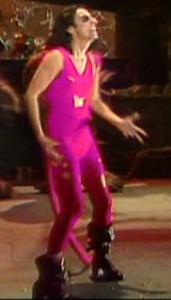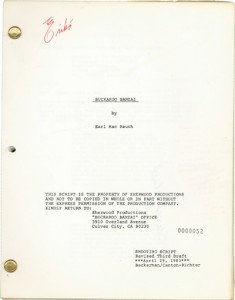
by Trevor Mayes | Dec 9, 2009 | Style, Transitions |
Often times, the trickiest part of screenwriting isn’t finishing your first draft — it’s paring the dang thing down to 115 pages or so! Every line becomes critical. It’s therefore key that we don’t use any superfluous transitions....
by Trevor Mayes | Nov 23, 2009 | Dialogue, Formatting, Style |
First, what are they? Parentheticals, or actor/character directions, or “wrylies,” are those little descriptions that sometimes appear after a character’s name, in dialogue blocks, to spell out tone, intent or action. In the poorly written example...

by Trevor Mayes | Nov 20, 2009 | Style |
Some Definitions A spec script is a screenplay that’s written “on speculation.” That is, you, the screenwriter, write the script without any development contract or promise of payment in place, in the hopes of getting it optioned, sold, or gaining...

by Trevor Mayes | Nov 17, 2009 | Humor, Scenes, Style |
There’s a real joy that comes with learning an inside trick of the trade. In film school, one of the first such screenwriting secrets I remember learning was that funny things are made ten times funnier by showing reactions to them — reaction shots1. Show...
by Trevor Mayes | Nov 11, 2009 | Style |
Simple is Better I’m sure you already know that your scene descriptions should only be written in the present tense, right? Riiiiight? Okay good. But are you using the simple present tense or the progressive present tense? Whuh? That’s a fancy way of...

by Trevor Mayes | Nov 6, 2009 | Characters, Dialogue, Scenes, Style |
There’s an old adage in screenwriting — show, don’t tell. If there’s a key character trait, event, or setting that the audience needs to know about, provide that information visually. Why? Humans are visual — we learn things more quickly...





